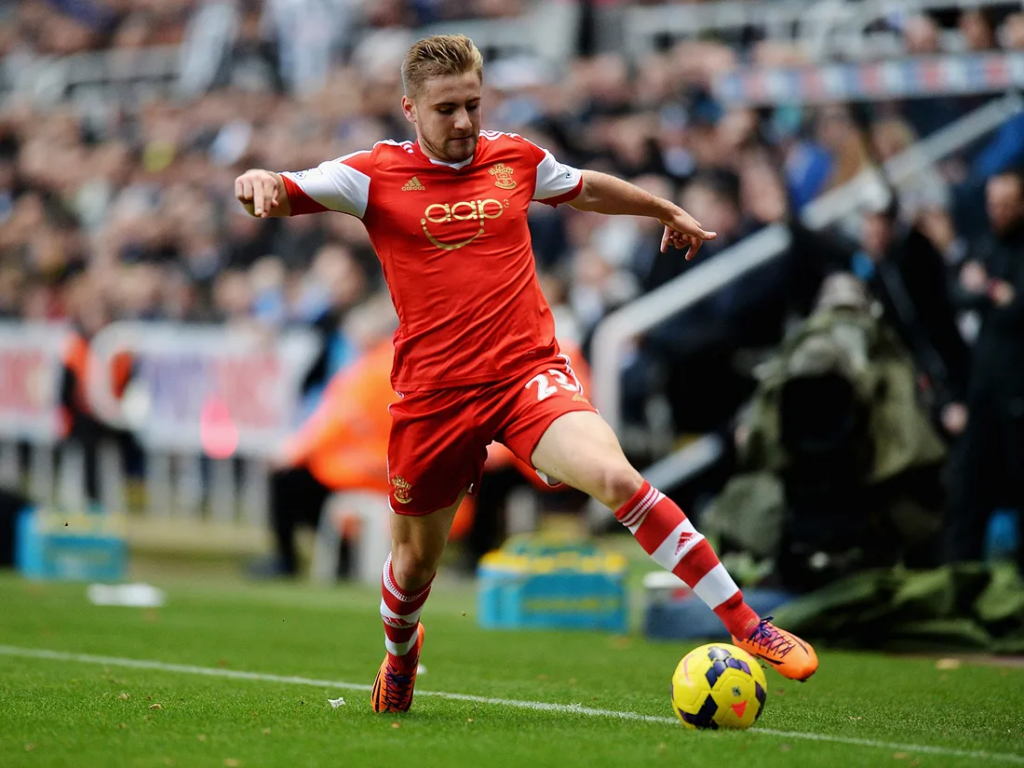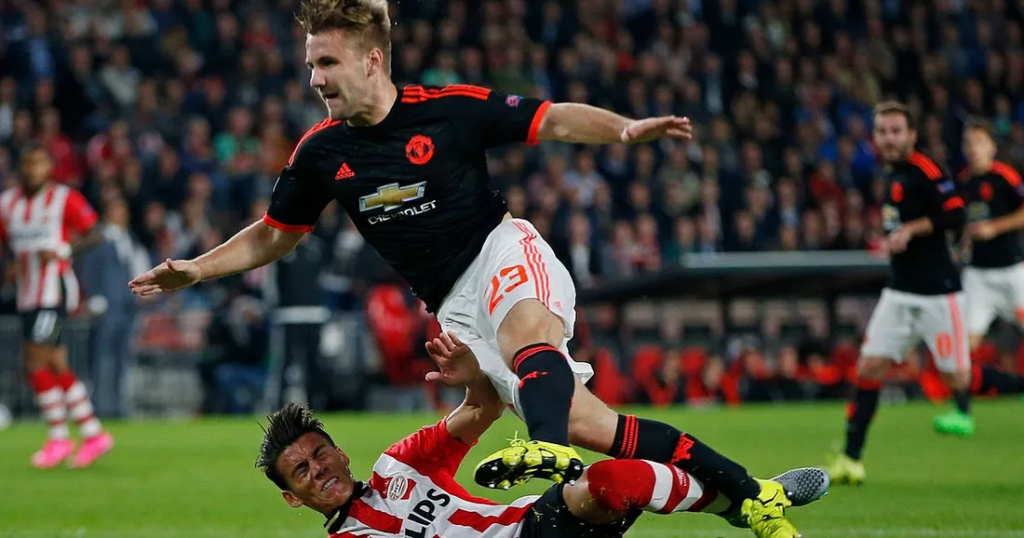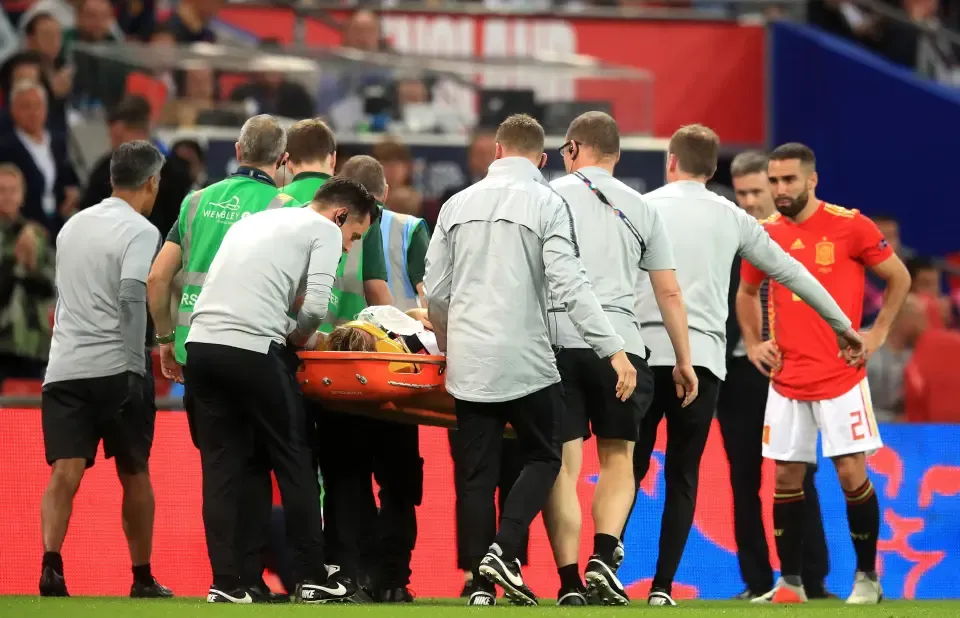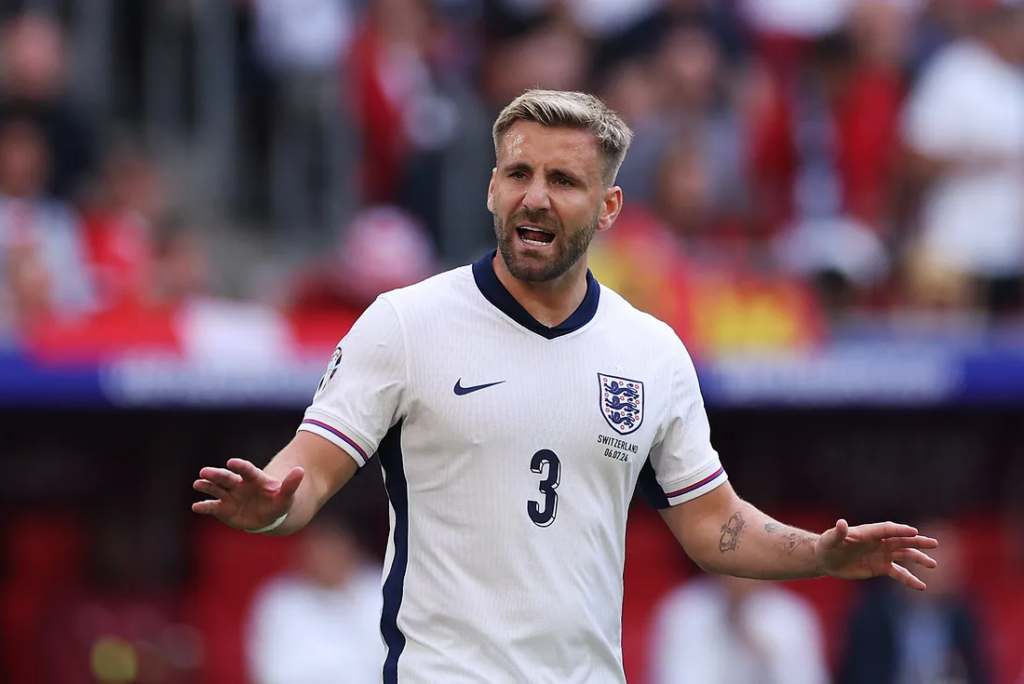A Shaw who became unsure of himself
September 12, 2015, was supposed to be just another match day. What was meant to be a stroll in the park quickly became the defining moment of Luke Shaw’s career.
In a Champions League clash between Manchester United and PSV Eindhoven, the young left-back was left writhing in agony on the pitch after a two-footed tackle from Héctor Moreno snapped his ankle like a toothpick. The injury, as horrific as it was, didn’t just shatter his bones — it cracked open the lid on a career that has been plagued with injury, inconsistency, and questions about what might have been.
Shaw’s rise to prominence had been swift. Barely into his teens, he was already catching the eye of scouts across the Premier League. With the likes of Gareth Bale, Alex Oxlade-Chamberlain, Adam Lallana and Theo Walcott coming through their pipeline, Southampton’s Academy was known for unearthing more gems than Solomon Vandy.
It wasn’t long before big clubs came calling for their talented number 23. Southampton, in the midst of their own rebuilding phase, had struck gold once again.

And so in the summer of 2014, Van Gaal’s United came knocking with a bid that would see Shaw become the most expensive teenager in Premier League history at the time, for a fee reported to be around £30 million. It was a massive leap, and the youngster walked into the Theatre of Dreams with the world at his feet, still buzzing over his World Cup call-up. The glitz and glamour of Manchester United were quickly replaced by a different kind of pressure.
In his first season, Shaw showed glimpses of his promise, but also the rawness of his still-developing game. He wasn’t the finished article, but that didn’t stop fans from expecting him to be the next Dennis Irwin. After all, when you’re Manchester United’s big money signing, it comes with the territory.
Then came the career-defining injury.
In the 15th minute of the match at the Philips Stadion, Shaw made a promising run into the box, only to be stopped by a dirty tackle from Moreno. Remarkably, the referee didn’t make a call, but it quickly became clear that Shaw had taken quite a hit.

Moreno, looking visibly concerned, quickly turned upon seeing Shaw’s right leg in an unusual position, curled up like a pretzel. Medical staff rushed to his aid, storming onto the field. Shaw was given an oxygen mask while the team worked to stabilise him. After an uncomfortably tense 10 minutes, the player was finally wheeled off on a stretcher. United fans were distraught. The very stadium that had given them Van Nistelrooy had curtailed Shaw. It was a double leg fracture, and the left-back went on to miss 11 months of football as a result of the injuries. The pain was excruciating, and the rehab was grueling.
Doctors warned there was a slim chance he could lose the leg. Whether these were medical examinations or medical exaggerations has been contested to date. Still, Shaw fanatics kept the faith, but with each passing year, Shaw would limp back into the picture only to limp back out, like Verbal Kint.
Ankle concerns, calf problems, hamstring issues, and the PTSD from that horrific PSV injury lingered. But if there’s one thing you can’t take away from Shaw, it’s his resilience.
Eric Cantona, Just Fontaine, Sebastian Deisler, Uli Hoeness, and Marco Van Basten had their careers truncated by injuries. Many more would have buckled under the weight of such setbacks. Many would have chosen early retirement and walked away from the game.
When you go from wheelchair to pitch to stretcher and then back again to wheelchair, it’s a vicious cycle.

And yet every time he returned, the fans cheered him on like he was a new signing. It wasn’t just a return in name, because when Shaw finally came back into form, particularly under José Mourinho’s tenure, there was a noticeable shift. His performances against top-tier sides showed that the player with glass ankles had evolved into one of the best left-backs in the league.
Under Ole Gunnar Solskjaer and later Erik ten Hag, Shaw’s renaissance seemed almost like an obligation. His runs up the left wing, surging forward with confidence, now came with an added maturity and defensive awareness that was once the missing piece of his game. At one point, he was even described as the adhesive that made The Three Lions stick.
But with that resurgence came the constant cloud of uncertainty. His body seemed to always play catch-up. Just when things seemed to be going well, another injury would rear its ugly head, which would force him to play in a way that was prosaic. And in the ever-competitive world of top-tier football, where players are expected to heal like Wolverine, no one has the luxury of waiting around.

As of now, Luke Shaw’s future is uncertain. The football world has moved on, with younger full-backs stepping up to grab the spotlight. With United’s continued evolution and seeking talents as distant as Lecce for replacements, Shaw’s role at the club and his place in the game as a whole seem unclear.
Sure, it’s been a career that has had its ups and downs, its setbacks and triumphs, but statistically, he’s been unavailable more times for United than he has played, missing over 330 games for the club. He has lost a lot of his explosiveness, preferring to play with caution. At the ripe age of 29, his goal in the Euro 2020 final remains the feather in his cap.
Shaw’s mishap is a story about the fragility of the modern footballer. A reminder that one tackle can shatter a dream, where a point of turn can become a turning point. This is a wonder kid who rose from the South Coast to be a marquee signing at one of the world’s biggest clubs, in the North. He was only 20 when he was hacked down that night.
Football can be cruel.
So, when his time finally ends as a United player, will he be fondly described as the man who played through the pain? Will he be spoken about for his clutch moments or the crutch ones?

It’s probably one of two extremes.
Should his time at United be defined by the 29 injuries that eventually slowed him down, or will Luke Shaw be remembered as the greatest thing to leave Southampton, well …since the Titanic?
From recent posts on his IG a few weeks ago, perhaps that ship has already sailed.



